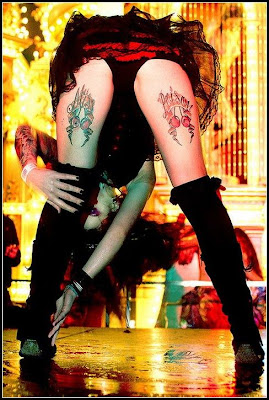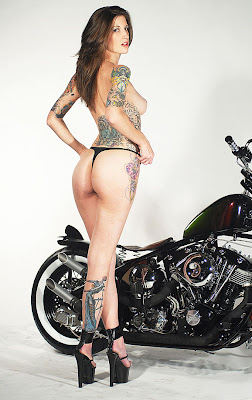I remember the exact moment I first heard Tori Amos--I was in the living room of family friends in Ohio and a 10-second clip of her playing "Caught a Lite Sneeze" on the harpsichord came on the TV to advertise for her MTV Unplugged appearance. It was the Spring of 1996. There was something about the combination of her voice, the orchestration of her music, and that baroque instrument. Boys for Pele is her most difficult album for most listeners, but is and always will be my favorite. Without getting too analytical, it is everything that feminist revisionist art should be. Not mention that her feminism didn't stop with her music, but also founded RAINN.
Both her music and her style combine elements from different periods and they purposefully play with iconography. Even in her deconstruction there is a playfulness to it. And whenever I lecture on Mary Stuart, I always show this photo, which might be my favorite:
But prior to my sudden enrapture by a single song, my feminist style icons as a girl were Anne of Green Gables and the American Girl characters. Maybe the young women in these books never actually articulated a feminist stance, but they fought for what they believed in and they didn't reject thinking about social and political conflict. And I loved Anne's self-fashioning. She was feisty, intelligent, a competitive student, and an eventual educator, but she still insisted on puffed sleeves and organza should the occasion call for it.
And while I did NOT have a desire to get married or have children when I was a girl or a teenager (again, these were not positive associations for me), I knew if I did, I must find a Gilbert Blythe--a partner whose love for me is rooted in friendship and comedy as much as it is in eros.
Like Katie, I am a military brat and the American Girl books were big on the bases when I was young. Although I am conflicted about the brand now, I loved and will always love those books. I credit the narratives of historical fiction through the gaze of single young woman combined with the "Looking Back," section at the end of the books for encouraging my academic interest in history as well as my political commitments. As a girl, I was deeply affected by the "Looking Back" section of Samantha Learns A Lesson, which discussed child labor practices during and after the industrial revolution. For some of us, the books that force us to attend to issues of capitalism, labor, and social justice are the works of Dickens; for me I needed to see Samantha's boots, jackets, and sailor suit along with them.
SFE channels her childhood and styles it up for a Volunteer Appreciation party
dress - Anthro/Girls from Savoy (remixed)
cardi - GAP (remixed)
gold glass earrings - Anthro (remixed)
floret necklace - gifted/MIL (remixed)
navy tights - LOFT (remixed)
gold shoes - Steve Madden
And I knew the moment I first saw it that I loved the cut and print of the Twinkle Twinkle dress because of Molly McIntire's Miss Victory costume from Changes for Molly. It was the vintage '40s cut plus the stars that had me at hello. What do you think?
Or, am I the only one who sees it? What about you? Any feminist style icons from fiction?




















No comments:
Post a Comment